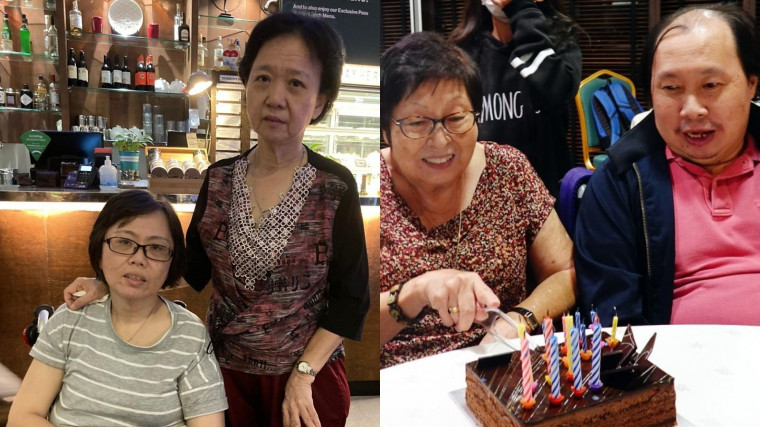A stroke happens when blood supply to part of the brain is interrupted. There are two kinds of strokes: ischemic (where there is a blockage) and hemorrhagic (when there is a bleed). In both instances, if left unattended for too long, this can result in brain damage in a matter of minutes.
This life-altering event can happen in a flash, but its repercussions are long-lasting — both for survivors and their carers.
Here are two of their stories.
Annie: Finding a new mission in life
In 2018, Annie Ong suffered a stroke. The 53-year-old had fainted at home but due to a delay in the diagnosis, was only properly treated one or two days later.
Had she received appropriate medical care during the ‘golden hour’, the crucial 60-minute period during which prompt medical attention could reduce the chance of serious brain damage in stroke patients, things may have turned out differently.
As it is, life as she knew it had irrevocably changed.
Annie lost the use of her left arm and leg. Her memory was affected (and hasn’t fully recovered even now). Her tastebuds became hypersensitive to salty, sweet and spicy flavours and she had to eat bland food for six months before recovering.
She says: “I had to re-learn basic life skills like brushing my teeth and washing my hands. I felt demoralised. I was in a wheelchair when I left the hospital. It was embarrassing. Finally, I told myself that I had to accept it because it was part of my life now.
“Once I accepted the situation, it became much better. I told myself, ‘if I am sad, I live one day; if I am happy, I also live one day. So I might as well live happy rather than sad.’”
Travelling the world
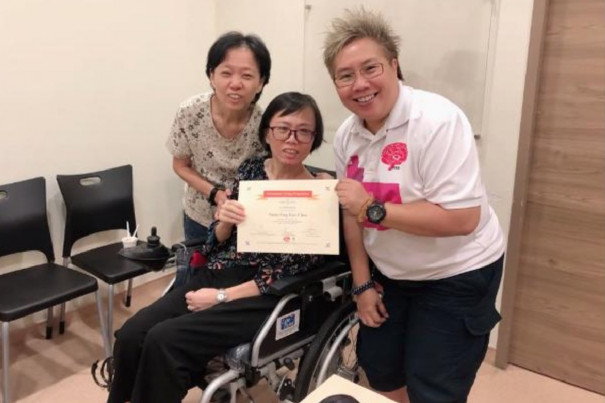
Before her stroke, Annie worked as a missionary. She went to London on her first mission trip in the 1980s, when she was fresh out of school. This was followed by postings to Liverpool and then to Sandakan in East Malaysia. She spent four years in parts of Africa – Botswana, Kenya, Uganda, Zambia and Zimbabwe.
“I had to learn to drive around by myself because public transport in these places was not well-developed.”
These days, Annie faces a different kind of challenge getting around. She uses a wheelchair to cover longer distances when she goes out, such as when she has medical appointments at Tan Tock Seng Hospital.
The hospital is a short 10-minute walk from her home but road closures due to Covid have turned this into a 30-minute detour. Her sister and main caregiver, Winnie, 66, accompanies her.
Says Annie: “She needs to use a lot of strength to push the wheelchair and I feel bad when I see her exert herself. But she always says, ‘never mind, don’t worry, we can make it.’”
Other times, they use public transport to get around — because it is cheaper than taking a taxi. She prefers to take the MRT because it offers a smoother ride for wheelchair users like her.
Sisterly support
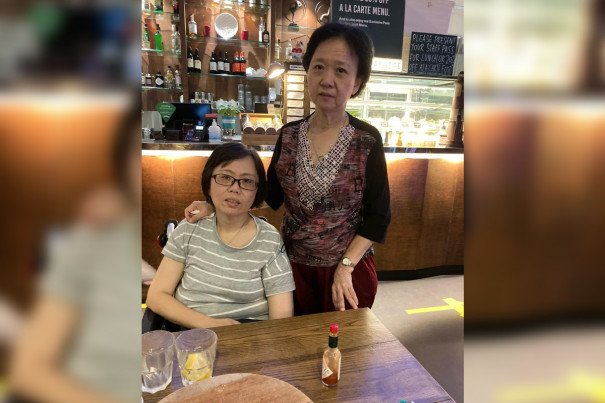
“Winnie and I are very close, even though we are 13 years apart,” Annie says of her sister, who helped to look after her from birth. Even today, Winnie continues to care for Annie while working as an accounts assistant. They live with two other sisters who are also unmarried. As these sisters have health issues of their own, the caregiver’s role rests on Winnie.
For her effort and progress she has made on her recovery, Annie recognises that she couldn’t have done it without her sister. She says: “If not for Winnie’s encouragement, I don’t think I can make it through this trial.”
Helping others

One highlight from Annie’s time in Africa was helping street kids in Botswana, preparing meals and getting adequate clothing for them.
“I find that it is a blessing to be able to help those who need help,” she says.
This calling to help others didn’t stop after the stroke. For example, during Chinese New Year, Annie found out that some residents at a home for the intellectually disabled were unable to return to their families because of Covid. She rallied her friends to contribute food, festive goodies and decorations so that the residents could celebrate the occasion in the home instead.
She says: “Some volunteer work I cannot do in my condition, so I help in whichever way I can. Even though I have a mishap in my own life, no matter what, I am still more blessed than others.”
Working with her hands
After a trip to East Timor a few years before her stroke, Annie learned to sew to teach the skill to needy families there. Back in Singapore, Annie gave lessons, sewed fabric bags to sell online and crocheted baby bonnets for charity.

All this came to a halt when the stroke left her with a weakened arm and leg.
Annie hopes to resume classes in making these bags one day, when she has regained strength and dexterity in her left hand. For now, she uses her crafting talent in other ways.
Last month, she conducted a craft class at the Singapore National Stroke Association (SNSA) in assembling diamond art painting kits. These involve using an applicator to place colourful beads on a template to form a picture. Annie says she selected this craft activity because it can be completed easily with one hand, and is an ideal activity for a stroke survivor.
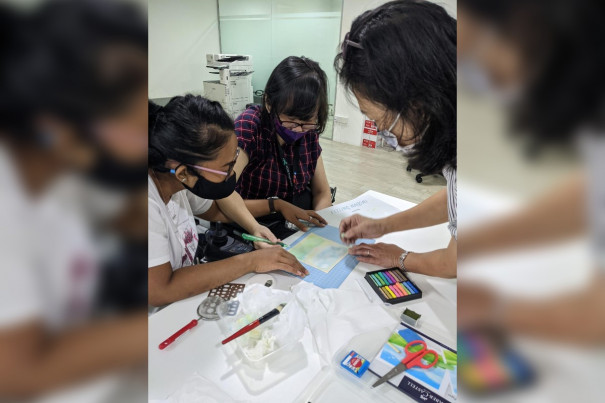
Annie says of her participation at SNSA: “I like the different events there. It keeps me active and the talks are helpful. Before Covid, I enjoyed the ‘Life After Stroke’ activities, where we had physiotherapy, karaoke sessions and went on outings.
“This allowed me to meet other stroke patients and realise that I am not the only one going through this struggle. Now we meet on Zoom once a month where we can still share our experiences as a stroke survivor or caregiver.”
Catherine: A mother’s love
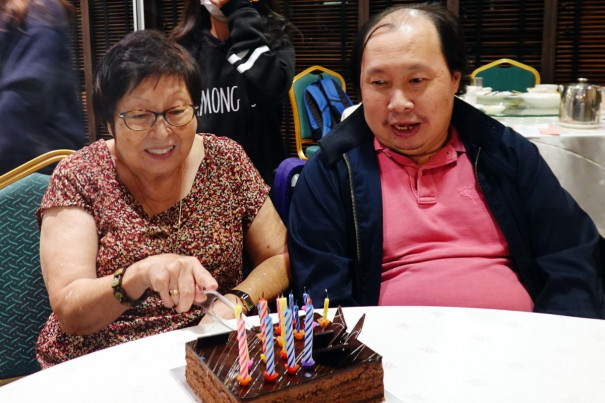
Catherine Yeow was enjoying her retirement, looking after her grandchildren, when her son Damien suffered a haemorrhagic stroke and collapsed at his workplace in 2018.
As a result of the stroke, Damian’s coordination of his limbs, his speech and short-term memory were adversely affected. Catherine found herself the primary caregiver of her son in her old age.
Today, the 78-year-old widow lives with Damian, 54, and a helper in their Ang Mo Kio flat.
Her daughter is busy with her job and her family, with two daughters of her own, aged 10 and 17, whom Catherine has looked after since their birth.
Since his stroke, Damian needs assistance moving from his bed to a chair and uses a walking frame to move around.
Catherine relies on her helper on the more physical aspects of his care, such as supporting him or putting on his diapers.
Catherine says: “I have had two knee replacements done. I cannot squat and have no strength to lift Damian. I walk a lot because I have to run errands and buy provisions.”
Other stories you might like
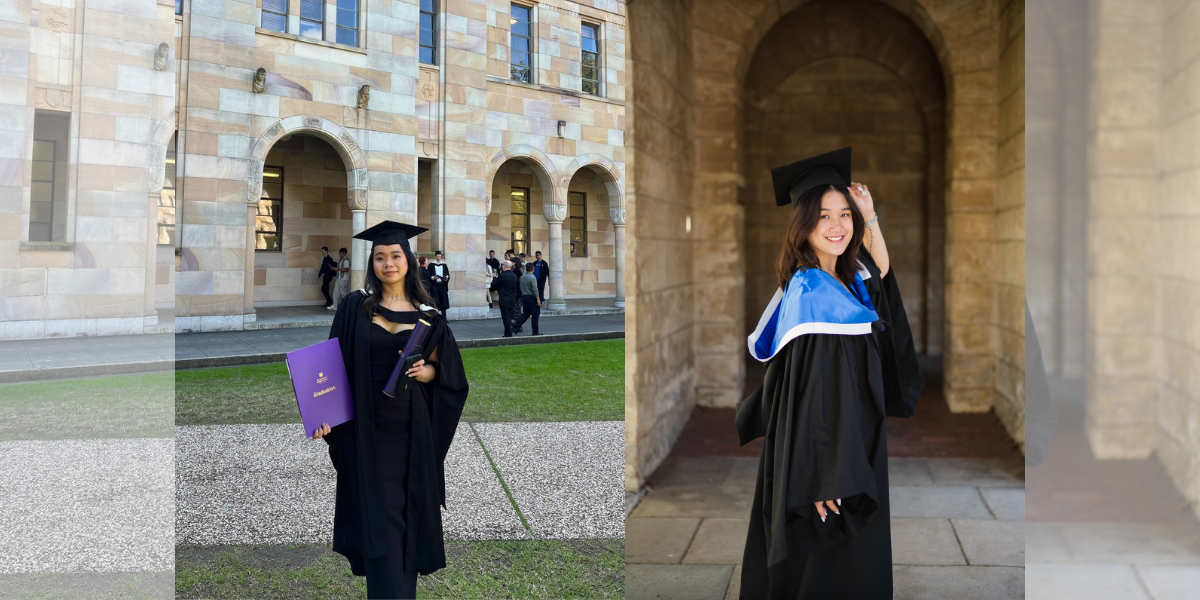
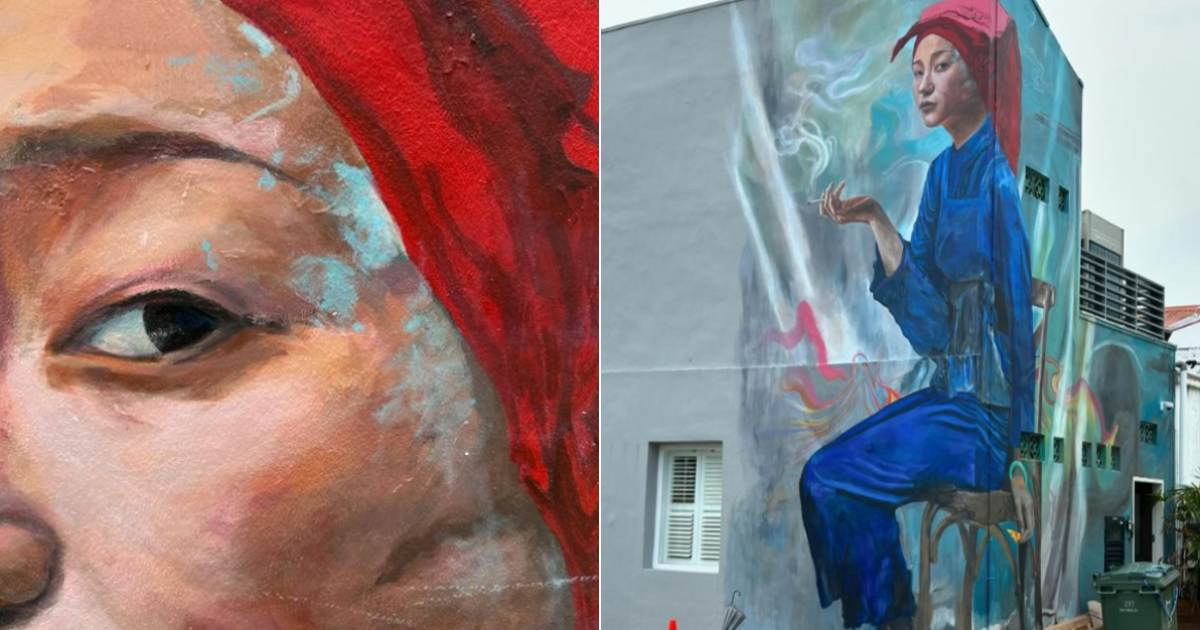
She recounts how before the stroke, Damian, who is single, would work long hours at his job at a bank. He would stay out after work and return home late. “When he came home, he would have dinner but we wouldn’t interact much. Now I am with him all the time.”
Catherine describes the initial days after Damian suffered the stroke.
“When I was looking after Damian in the hospital. I would just come home from the hospital and go to bed immediately. I was that tired. I didn’t bother to eat or dress up nicely. I didn’t have any appetite. I lost 10kg. When something like that happens to your child, you just don’t think of yourself.”
Now, Damian needs the full attention of a caregiver and Catherine is philosophical about his condition. She says of the care she gives him: “It’s repayment for all the time we didn’t have together before.”
She gets Damian to attend virtual church services with her, saying that it helps improve his concentration and also his blood circulation when he sits up for the one-hour mass.
Making all the decisions
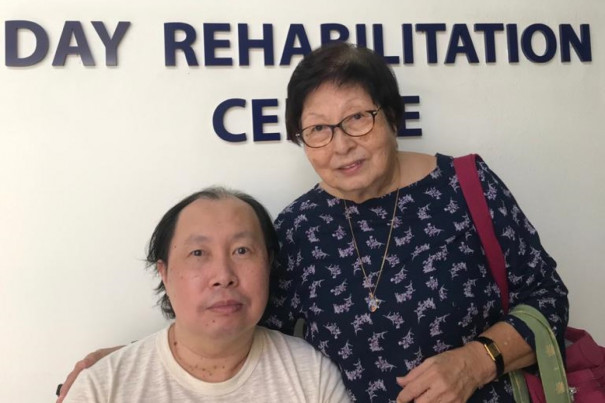
Now, three years after his stroke. Catherine plans Damian’s daily rehabilitation routine. It used to include visits to the Thye Hua Kwan day rehabilitation centre, speech therapy and home-based therapy. But now, due to Covid, these activities are conducted online.
It still requires a lot of planning because Catherine has to balance treatment fees (costly even after subsidies), transport costs and even what types of therapy Damian goes for.
She says, a little tiredly: “I have to make all the decisions.”
Thankfully, she gets some relief at a caregiver’s support group at SNSA. There, she exchanges information and talks about her experiences with other caregivers.
“It helps, especially at first, when I had to spend two months in hospital looking after Damian,” she says.
Like most of Damian’s therapy sessions, these meetings are now online, since they cannot meet in person.
Caring for the caregiver
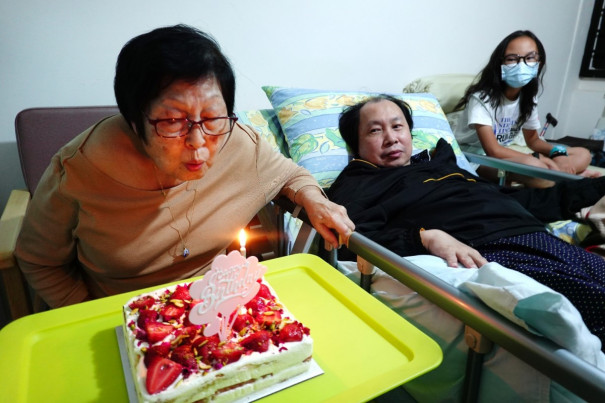
Catherine acknowledges that she does not have an easy task.
“It’s very difficult. It takes a lot out of you. But as long as you know that the job has to be done, you do it. It gets better with time. You move on and make the best of it.”
Amid her many responsibilities, Catherine takes time for some self-care, she says. Her needs are simple.
“A break would be good. To meet friends, chat and have lunch. Just spend some time together.”
Her treat to herself? Going for a facial, she says with a smile. All this is possible only with the help of her reliable helper who attends to Damian while she takes a break.
As a mother, Catherine’s greatest concern is still for her son. “I’m 78. I don’t know how much time I have left. As long as I’m here, I can look after him. But when I’m gone, who will?”
If you like what you read, follow us on Twitter and Google News to get the latest updates.
